Happy New Year! As 2015 begins, I’m delighted to acknowledge a significant milestone in the Getty Conservation Institute’s history. This year, the Conservation Institute turns thirty, and throughout 2015 we will celebrate this anniversary by looking back at some of the accomplishments, work, and events that have shaped the GCI since its founding in 1985.

Among our first field projects was the conservation of wall paintings in the Tomb of Queen Nefertari, which included developing a long-term maintenance plan for the tomb.
For the next twelve months, our social media channels, Facebook and Twitter, will include thirtieth-anniversary posts, which will be accompanied by periodic posts here on The Getty Iris. In addition, the fall issue of Conservation Perspectives, The GCI Newsletter will reflect on the work of the Institute and its relation to the conservation field over the last thirty years.
In the early 1980s, the Board of Trustees of the J. Paul Getty Trust was in the throes of deciding how Mr. Getty’s remarkable and generous bequest would most benefit the visual arts. In its earliest proceedings, the Board recognized that conservation should be made a priority for the Trust, given the needs of the conservation profession and the challenges and threats facing humankind’s extraordinary legacy—its millennia of cultural heritage. In 1985, the Conservation Institute’s founding director Luis Monreal was appointed and later that year the Institute moved into its first headquarters in Marina del Rey, California.
With continued and strong support of the Getty’s Trustees, the Conservation Institute has been able to carry out work of consequence with distinguished partners worldwide. Over the past three decades we have addressed important problems related to the conservation and care of collections, buildings, and sites. We have delivered education and training on a broad range of issues and for a broad range of media. We have pursued scientific research that has answered questions that benefit conservators and other professionals. And, finally, we have built a world-class conservation library and have actively disseminated our work, and that of others, by publishing books, online materials, and a variety of research resources.
None of our work has been accomplished alone, but rather in partnership with committed professionals and organizations around the world. We are grateful for your support and engagement over these past decades. All of us together contribute to preserving the world’s cultural heritage, and we each have a privileged and essential role in its care.
I hope you follow us on our social media channels as we look back over the last thirty years. Each of us at the GCI is pleased to share our work with you and hope you’ll enjoy this tour through our short, but rich, history.
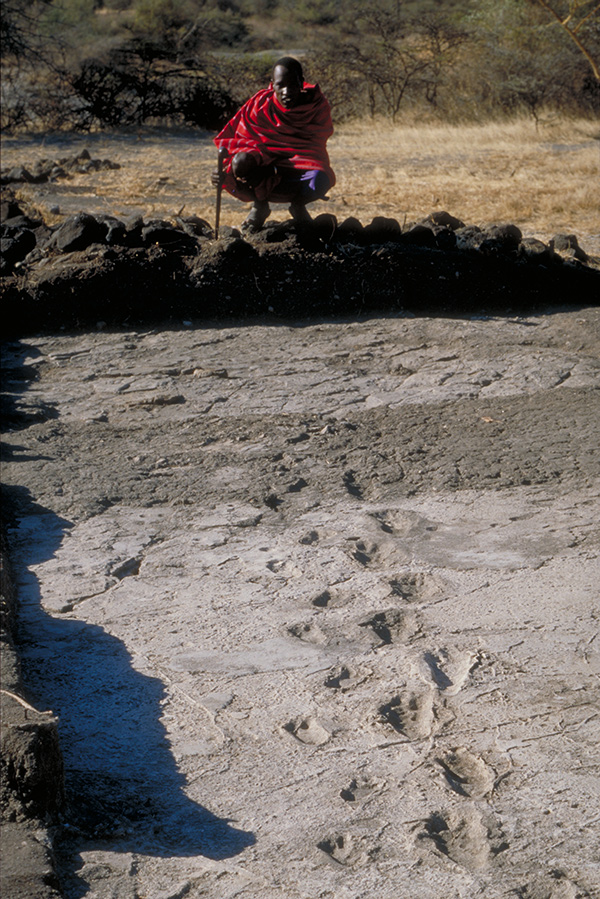
Through conservation and site maintenance, we worked with the government of Tanzania to protect the 3.6 million-year-old hominid footprints at Laetoli.
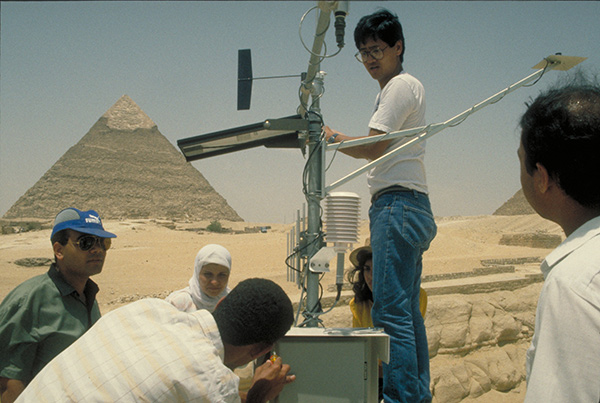
Our work at the Great Sphinx on the Giza Plateau in the 1990s included conducting an environmental monitoring study with a monitoring station designed and constructed by Institute staff.

For nearly twenty-five years, we’ve partnered with China’s State Administration for Cultural Heritage on projects for the conservation and management of China’s cultural heritage, including work to conserve wall paintings in the cave temples at Mogao.

Conservation work in the cave temples at Mogao, China

The Church of Santiago Apóstol of Kuño Tambo, Peru. Advancing the conservation of earthen architecture through training, research, planning and implementation, and advocacy has been an important area of our work. Photo: Scott Warren for the GCI
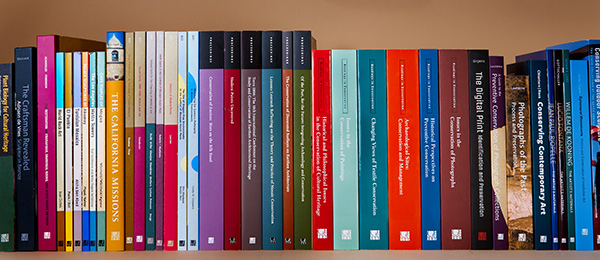
A selection of books published by the Conservation Institute.
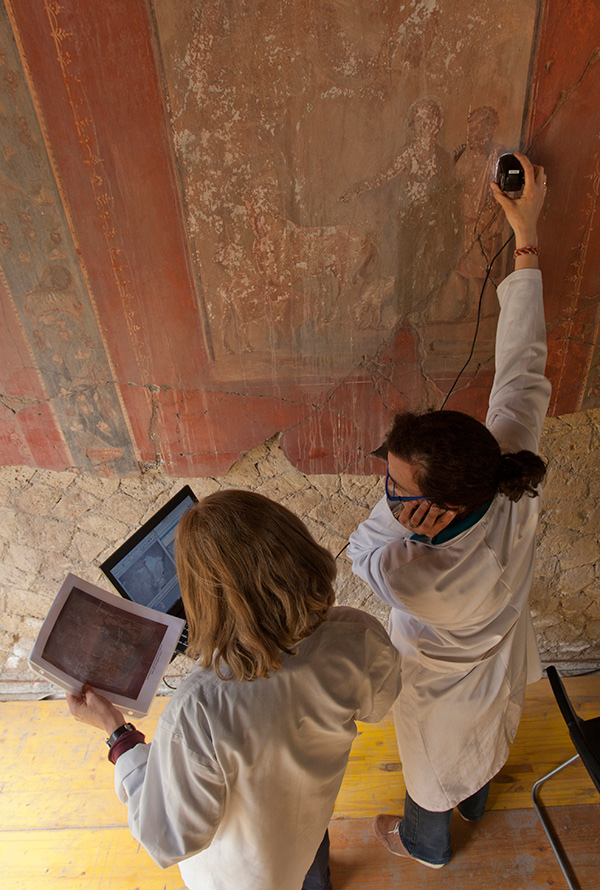
At the archaeological site of Herculaneum, we are working to address the site’s preservation through a conservation program of scientific investigation and fieldwork, including conservation of decorated architectural surfaces, such as this wall painting in the Casa del Bicentenario.
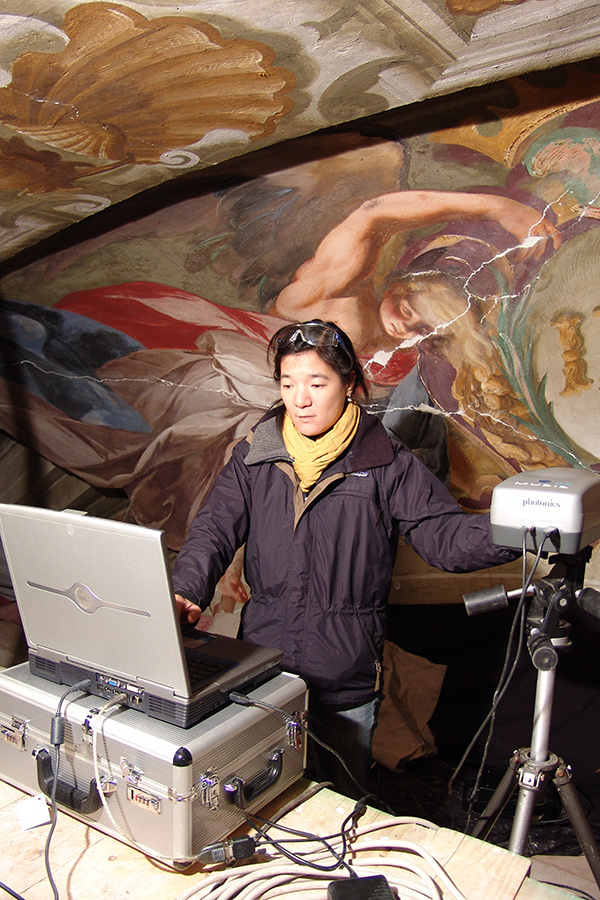
In our work, conservation science plays a key role in the determining treatments, which are developed according to a methodology that begins with the characterization and identification of the problems through rigorous diagnostic investigations.

In 2007, the Conservation Institute began scientific research in modern artists’ materials, including paints and plastics.

The Getty launched the collaborative MOSAIKON Initiative in 2008 to improve the conservation, presentation and management of mosaics in the southern and eastern Mediterranean region.

The Research Into Practice Initiative—training workshops, colloquia, and similar events—was created to present new scientific advances resulting from research undertaken by the Conservation Institute and its partners including our research into cleaning of acrylic painted surfaces.

Our scientific research includes decorated surfaces—mosaics, grouts, wall paintings, and plasters

Our long-standing work in the area of preventive conservation includes research into improved techniques for the lighting of works of art on paper including a three-band filtered light source.



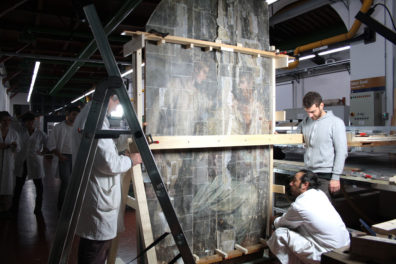
What a fascinating post – the ways that art and science can collide and support each other are so incredible to me!
I have a bit of a tangential question and I’m hoping either you, Mr. Whalen, or another Iris reader might be able to help me. I am looking to repair/restore a couple of family Bibles that were recently discovered in storage. They’re 100+ years old and leather bound so the spines and covers are in pretty bad shape. Might someone be able to recommend a direction to go in looking for someone to help us repair and conserve these family heirlooms? Thank you so much for your time – and for all of the work you do with the GCI!
Dear Leslie,
Thank you for your comments. As for your question about conserving your family bibles, I recommend that you consult the website of the American Institute for Conservation of Historic and Artistic Works (AIC): conservation-us.org.
In addition to a searchable national directory of private conservators, the AIC provides useful guides to finding a conservator and caring for your personal heritage. If you have further questions, please feel free to contact the GCI Information Center at gciinformationcenter@getty.edu.
Cameron
Thanks so much for your reply, Cameron! What a great resource. I appreciate your time!
Leslie Paprocki